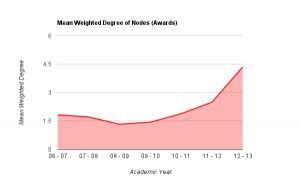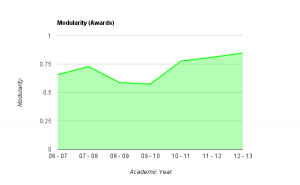I haven’t blogged recently about APMS, but nevertheless there has been a huge amount of working going on to get everything ready.
A great deal of testing, bug fixing and re-testing has taken place. Last week this culminated in a full run-through of the User Acceptance Test (UAT) suite to determine how ready the system is.
This week we did a ‘technical’ launch of the live system. What this means is that our internal live server is now holding the real data, is configured for use and is being used by a small number of individuals. Those individuals are continuing to input the vast amounts of programme and module data from manual sources, and efforts are being concentrated on the versions of programmes that have been taken by those graduating this year so that their diploma supplements can be produced from the system. The task is greatly complicated by the fact that programme modifications need to be retrospectively entered into the system from the correct dates so that APMS, and subsequently graduates’ diploma supplements, contain exactly the right details about what was studied.
One of the last changes we made before the ‘technical’ launch was to include the option for different titles for earlier exit awards. For example, for “BSc (Hons) Intergalactic Space Travel Studies”, those exiting at CertHE or DipHE levels actually get the award title “CertHE/DipHE Space Studies” (in case you’re wondering, we don’t really offer that programme). There are still some adjustments to be made before a full-scale launch, such as getting the export format for our student management system exactly right, working out the final detail of support procedures and some tweaks to programme specifications, but things are certainly looking good. In addition to the soft launch of our live server, our internal test server also had all the live data copied to it and is now in full use for final adjustment and testing. From now on, all changes have to be made on the test server first and properly tested before being released in a controller manner to the live server.
An additional item of work that Worktribe have started on is integrating APMS with the library’s new reading list system, called Talis Aspire. We wanted to avoid academics having to maintain reading list information in two places, and Talis Aspire offers functionality never intended to be in APMS so is the obvious (and right) place for reading lists to reside. What we do need to ensure, though, is that reading lists exist and can be reviewed when programmes are proposed and changed. An additional piece of work was therefore agreed to put in place a link between the two systems.
To recap what APMS does…
- Programme, short-course and stand-alone credit
- Stores the details!
- Proposal and building, including all module information
- Approval and validation (both internal and external)
- Modification and revalidation
- Deletion
- Rollover to next academic year
- Marketing
- Copy writing and approval
- Information and feeds, including XCRI-CAP and XML files for use to feed our own web pages
- External examiner reports
- Diploma Supplement production
- Generation of documentation and files
- Programme and module specifications
- Programme proposal proformas
- Programme deletion forms
- External Examiner report forms
- Export to Agresso Students
When you look at that list and compare it with all the work that has been done, it seems like there isn’t as much there as you would expect. I can assure you there is a lot to it though, and it will make a significant difference to how we manage programme, module and related information.

